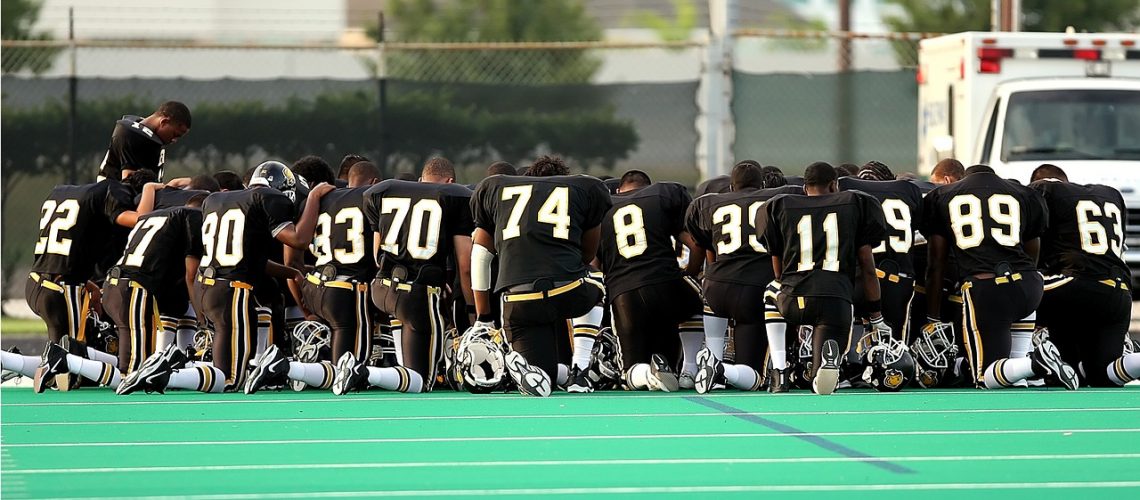The Ninth Circuit has just issued a ruling in which it does everything wrong. Worst of all, it pits the Establishment Clause against the Free Exercise Clause.
Here are the basic facts: A football coach after a game went to the center of the field, by himself, knelt with bowed head, then went to the locker room. The school, (correctly) interpreting this as prayer, told him he could not do that publicly and, ultimately, refused to rehire him.
When this case went up to the Supreme Court the first time, four justices (Alito, Thomas, Gorsuch, and Kavanaugh) said what the school did sure sounded like a violation of the Free Exercise Clause, but they needed more evidence as to whether that was the real reason he was not rehired. Back at the trial court, the school put on more evidence, and the trial court again said what the school had done was okay. The Ninth Circuit just agreed with the trial court, based on the additional evidence. (The case is Kennedy v. Bremerton School District, 2021 WL 1032847 (Mar. 18, 2021).)
The problem is, none of the additional evidence should have made a difference, and, by saying it did, the Ninth Circuit misinterpreted the Establishment Clause as giving the school an “out” to violate a teacher’s right of free exercise of religion.
Let’s start with the basic proposition: no reasonable person could have considered the coach to be “representing” the school or doing anything other than praying as a private individual. He had a right to be on the field, and he was not presenting a hazard to anyone. So the school violated his free exercise right by telling him to stop and then punishing him when he refused to do so.
The additional evidence was this: the coach publicized what the school was doing to him, players voluntarily joined him from his and other teams, and parents and other members of the public also joined him on the field in a show of solidarity. From this, the trial court and the Ninth Circuit found that the situation had turned into a prayer meeting that someone could interpret as being school-sponsored and, thus, was forbidden by the Establishment Clause, so the school was required to stop it! Both courts also cited the testimony of one student on the team who expressed a purely subjective fear that, if he didn’t join the prayer meeting, he might get less playing time.
It is more than ironic that the school says a “reasonable observer” would think that a group that has formed in protest to what the school has done is actually a school-sponsored group; but that didn’t stop the Ninth Circuit from adopting that counterintuitive proposition. A student’s subjective fear cannot outweigh a teacher’s right of free exercise of religion as an individual; but that didn’t stop the Ninth Circuit from latching onto it. The Establishment Clause is not violated by private actions, done either individually or in a group; but that didn’t stop the Ninth Circuit from using the Establishment Clause to allow a school to punish an employee who had the courage to push back publicly when the school trampled his free exercise rights. A teacher’s publicizing a school’s violation of his constitutional rights cannot itself be a constitutional violation, with the right to publicize wrongful governmental conduct being protected, not just by the Free Exercise Clause, but also by the First Amendment freedoms of speech, press, assembly, and petition for redress of grievances; but the Ninth Circuit believes the Establishment Clause can be used to override the Free Exercise Clause based on the unfounded beliefs of the school and a student.
We hope that the Supreme Court will take the case to correct this distortion of the Religion Clauses and to vindicate the coach for standing up publicly for his right to exercise his religion.

